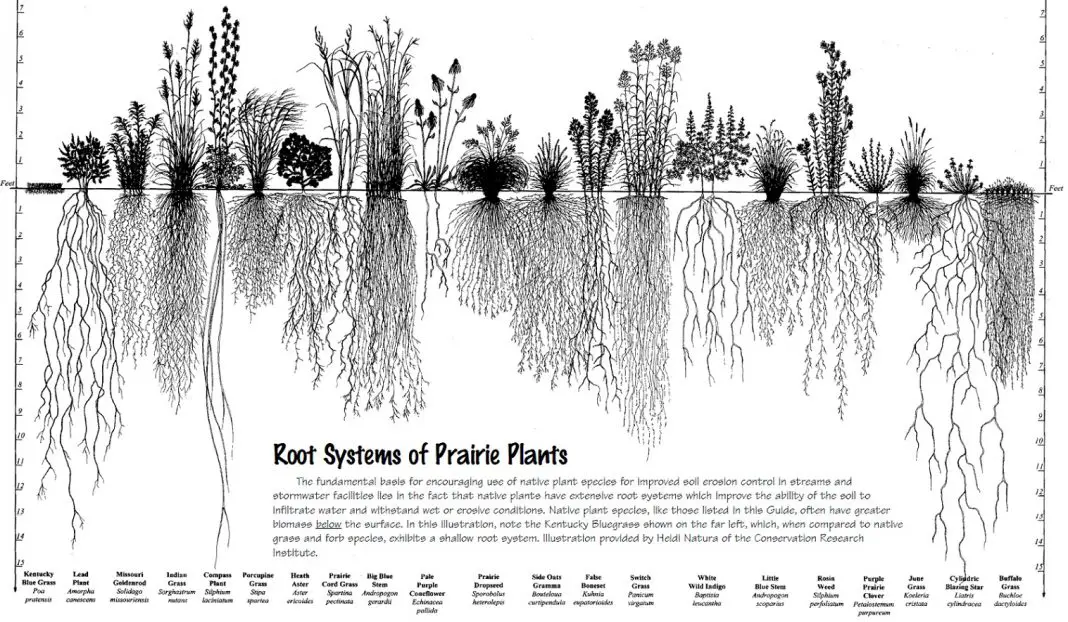I’ve been a ‘no-lawn’ advocate for at least the last 25 years. If the definition of insanity is doing the same thing over and over again and expecting a different result, why do so many millions of us get out every weekend and mow our lawns?
OK, if you’ve got young children, you’re excused for having a small area of grass. Everyone else will find grass at their local park. And yes, I know all about the dreaded “home owner’s association’ and local government codes, but maybe it’s time to get yourself elected and to start agitating for change.
Lawns aren’t a phenomenon of urbanization. In fact, the word ‘turf’ derives from the ancient Sanskrit word for tuft of grass. Lawns as we know them date back almost 500 years. But times, population pressures and environmental challenges demand a rethink of landscaping practices.
I couldn’t find any recent figures, but in 1999 the average American household spent $222 on lawn care , $94 for flower gardening and just $91 on their vege patch! And that doesn’t account for the opportunity cost of those countless hours wasted maintaining those lawns.
Lawns are expensive and they are poisoning our environment and quite possibly, our children. The following stats are for the USA, but it’s easy to extrapolate them to Canada, Australia, New Zealand or wherever you live:
♦ Something around 5,000 acres of land get turned to lawns every day in the U.S.A.
♦ American lawns currently cover more than 41 million acres. Many millions of those acres are irrigated with precious water.
♦ Over 30,000 tons of pesticides get applied to those lawns every year.
♦ 17 of the 30 most commonly used lawn pesticides are routinely detected in groundwater.
♦ National Cancer Institute research shows that children in households that have lawn treated with pesticides have a 6.5 times greater risk of developing leukemia.
♦ To keep those lawns green and ‘healthy’ requires some 200 gallons of fresh water per person per day!
♦ Of the 30 most used lawn pesticides:
- 19 are linked with cancer or carcinogenicity,
- 13 are linked with birth defects,
- 21 with reproductive defects,
- 26 with liver or kidney damage,
- 15 with neurotoxicity, and
- 11 with disruption of the endocrine system.
♦ Now consider that of those 30:
- 17 are detected in groundwater,
- 23 have the ability to leach into drinking water sources,
- 24 are toxic to fish and other aquatic organisms vital to our ecosystems,
- 11 are toxic to bees, and
- 16 are toxic to birds.
Source
We’re Running Out of Water!
If all the water on earth could fit in a one litre jug, less than one tablespoon of that water would be fresh water. But even of that tablespoon, humans can only access about one teaspoon! Yet we use that precious resource to grow grass (and to flush our toilets but that’s a post for another day)! We read about drought every day yet still turn on our lawn sprinklers!
If you still need convincing take a look at this image. You can see a larger version by clicking on it.
Kentucky Bluegrass (which, by the way, doesn’t come from Kentucky or even the USA) is shown at the top left. It’s obvious why it needs constant watering. The native plants are not only maintenance free, those roots are sequestering carbon from the atmosphere into the soil! That’s the 9th reason I have minimal lawn.
In the photo of my garden above and at the top, you can’t see the edible plants, but they’re there! Citrus, lilly pilly, passion-fruit, tomatoes, ginger, chives, parsley and mint, together with medicinal plants like aloe. With the exception of the mint and parsley, they survive and generally thrive on natural rainfall, lots of mulch and the occasional handful of chook manure.
And in case you’re wondering, I sit on about 600mm of heavy clay underlain with shale. Believe me when I say my ‘soil’ is the worst I’ve ever encountered as a gardener and landscaper.
The bottom line is that you can increase your leisure time, reduce your outgoings, eat the freshest produce and bring nature back into your yard – just by getting rid of that lawn.
If you need further convincing, here’s a tenth reason… a nicely landscaped yard can add up to 20% to the value of your property!
Think about it 🙂


